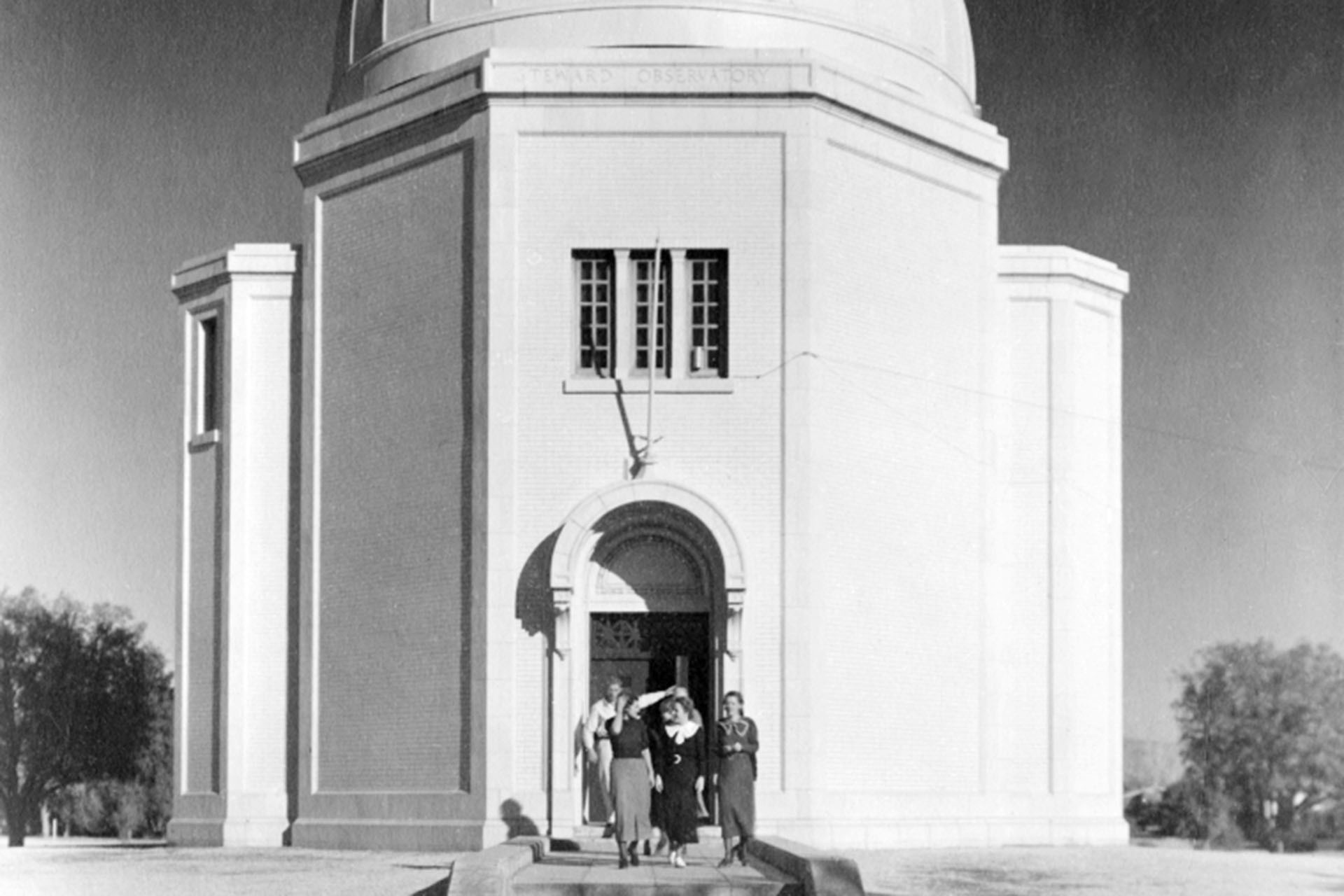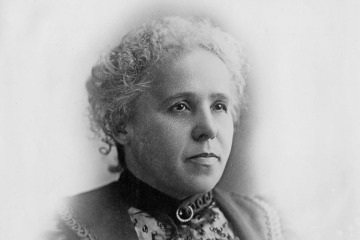A Century of Exploration
100 years of sharing the night sky at Steward Observatory

The Steward Observatory dome was located outside of the university campus, on a former ostrich farm.
Steward Observatory
For over a century, the University of Arizona’s Steward Observatory has pushed the boundaries of astronomical research and established itself as a world leader in space sciences.
The observatory’s story began with Andrew Ellicott Douglass, an astronomer who had previously served as UArizona president. Douglass established the observatory in 1918, having already established Lowell Observatory in Flagstaff.

Lavina Steward, 1900.
Steward Observatory
Construction of Steward Observatory was made possible by a donation from Lavina Steward in memory of her late husband, Henry Steward. Its location was set off campus at a former ostrich farm, but today it can be found on campus at 933 N. Cherry Ave.
The observatory’s dedication was delayed until 1923 due to World War I. When it finally opened, it included the first astronomical telescope built entirely out of domestic-made products, nicknamed “All-American.” Despite its age, the original observatory telescope is still in use at Kitt Peak National Observatory southwest of Tucson, tracking asteroids and comets for the Spacewatch program.
To commemorate the observatory’s 100th anniversary this year, patrons attended a lecture about the James Webb Space Telescope, learning about its infrared “eyes,” which capture the latest findings on exoplanets. Guests also got a chance to view the Sonoran night sky through the observatory’s state-of-the-art telescopes.
In addition, the event recognized Regents Professor of Astronomy Marcia Rieke, the first endowed chair in the department of astronomy at Steward Observatory. Rieke holds the Dr. Elizabeth Roemer Endowed Chair in recognition of her dedication and scholarship.
At the event, Steward Observatory Director Buell Jannuzi remarked, “For more than a century, the students, staff and faculty of Steward Observatory and the department of astronomy have explored the universe together and shared what we learned with the world, and we are excited to continue our efforts into our second century.”

Dr. Edwin Francis Carpenter (left), the second director of Steward Observatory and former head of the astronomy department, stands with the "All-American" telescope.
Steward Observatory
Over its first 100 years, Steward Observatory has helped build and operate over a dozen space telescopes across the state and at observatories in Chile and Antarctica. And Steward researchers have made history by developing crucial instruments for NASA’s Hubble and Spitzer space telescopes.
UArizona also has become one of the founding partners in the Giant Magellan Telescope. When completed, it will be one of the world’s largest. All its primary mirrors are being made at Steward Observatory’s Richard F. Caris Mirror Lab.
The work has an economic impact as well as a scientific impact. “Together with the activities of our sister space science units — the Lunar and Planetary Laboratory and the department of planetary sciences — we have a huge economic impact on the state of Arizona, totaling $560 million annually,” Jannuzi said.
Steward Observatory also contributes to the Tucson community through its public outreach facilities, such as the Mt. Lemmon SkyCenter science facility and Sky School, which provides science education opportunities to K-12 students.
